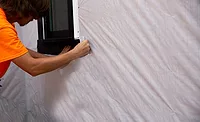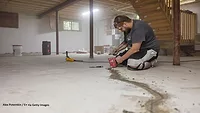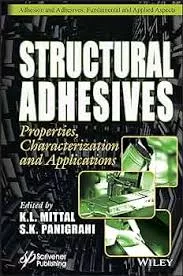UV-Cured Acrylic Adhesives for Building Envelope Applications
The characteristics of ultraviolet (UV)-cured acrylic adhesives outweigh alternatives when health, the environment, longevity, and durability are priorities.
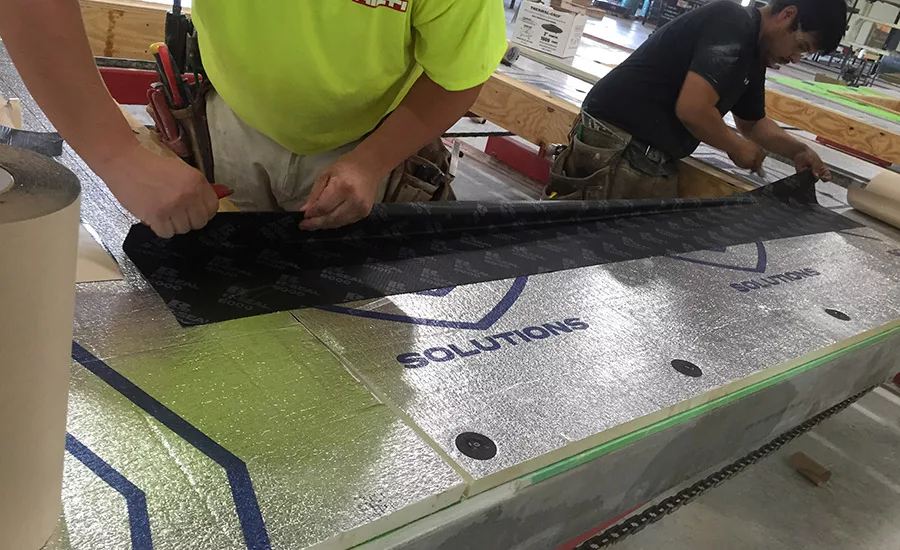
In commercial and residential architecture, the building envelope contributes significantly to a structure’s sustainability. At its most basic, the building envelope is viewed simply as the profile of a structure. In reality, it functions as one of the building’s primary performance aspects, maintaining the desired indoor living conditions from the elements outside. The building envelope assists in controlling moisture, noise, temperature, and even air pressure.
Because air leakage can represent roughly 20% of the energy used for a building’s heating, ventilation, and air conditioning (HVAC) system,1 it is critical to choose the correct materials (e.g., membranes, spray foams, and sealants) to ensure the envelope is sealed properly. A properly sealed building results in greater occupant comfort, lower operating costs, and less energy consumption.
Sealants and adhesives play an integral role in achieving these goals. However, not all adhesive formulations are created in the same way or from the same materials. Some may actually interact negatively with various building materials or perform temperamentally in areas of the country that experience broader seasonal temperature fluctuations. Choosing the correct adhesive saves valuable time and reduces labor, as well as the likelihood of costly rework.
Considering Adhesive Type
Three main types of adhesives are used for building envelope applications: rubberized asphalt, synthetic rubber, and acrylic. While rubberized asphalt and synthetic rubber have their place in the market, they have significant drawbacks and should be considered carefully.
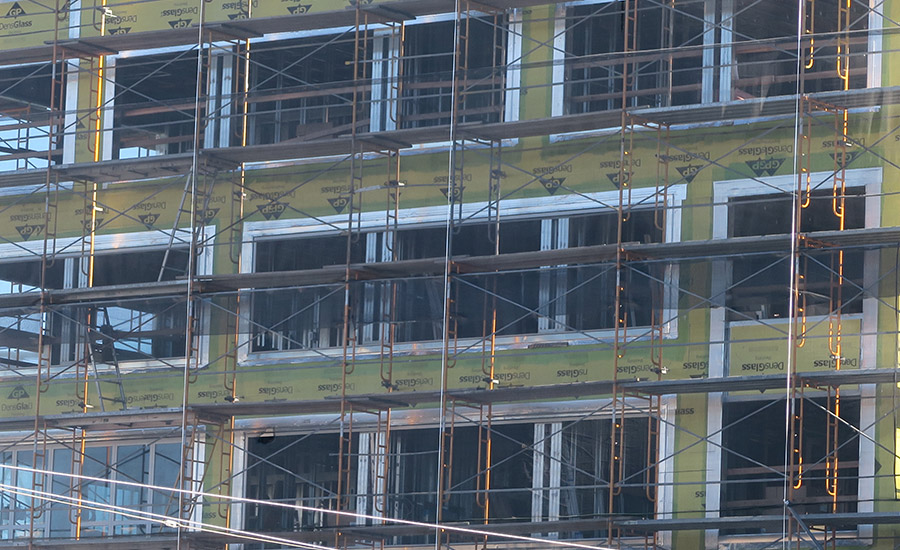
Implementing a reliable, safe adhesive in the building envelope eliminates stressful situations and possible litigation.
For instance, the volatile organic compounds (VOCs) in rubberized asphalt, sometimes referred to as bitumen, react poorly with solvents and chemicals found in common building materials like caulking or sealants, causing the materials to degrade and interfere with the adhesive’s effectiveness over time. VOCs also release ground-level ozone and toxic chemicals that are detrimental to the environment and human health, causing everything from eye, nose, and throat irritation to cancer.
Synthetic rubbers, also known as elastomers, are typically produced as butyl rubber and block copolymers and don’t contain VOCs. However, block copolymers have little resistance to ultraviolet (UV) light, and both types of synthetic rubbers contain tackifiers that migrate over time, lessening the adhesive’s strength. In addition, synthetic rubbers are prone to oxidizing and decoloring, especially when exposed to high heat.
Adhesives that fail, become unsightly, or negatively impact health or the environment are a major concern for today’s building professionals. Implementing a reliable, safe adhesive from the beginning eliminates stressful situations and possible litigation if chemicals in the materials interact poorly.
UV-Cured Acrylic Benefits
Custom UV-cured acrylic adhesives are frequently the best choice for enhancing the performance of building materials such as water-resistive barriers (WRBs) or housewrap, flashing tapes, sheathing, and roof underlayments. Acrylic adhesives provide the highest level of adhesive performance and are considered a “green” choice because they are free of solvents and VOCs, which also makes UV-cured acrylic adhesives compatible with most building materials.
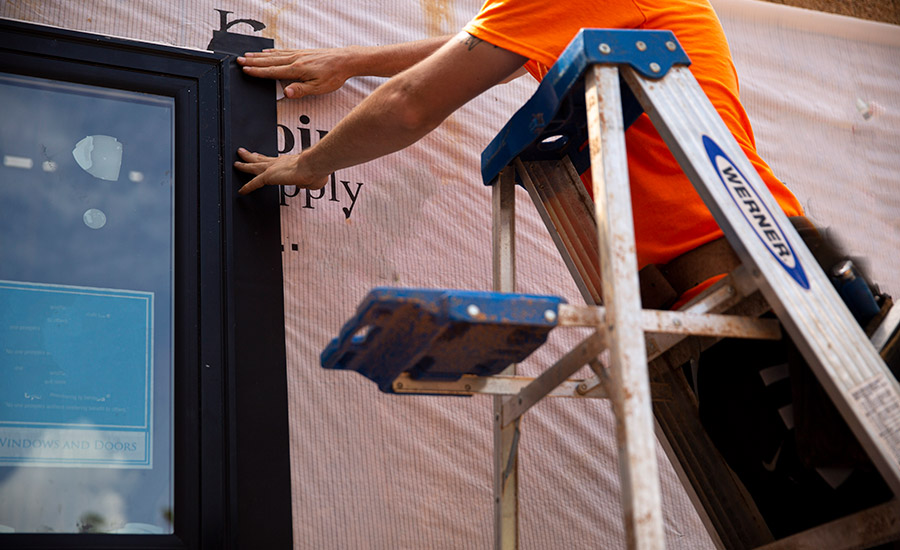
UV-cured acrylic adhesives enhance the performance of building materials such as water-resistive barriers (WRBs) or housewrap, flashing tapes, sheathing, and roof underlayments.
The process for manufacturing UV-cured acrylic adhesives is also better for the environment, as it saves energy use in production by eliminating the need for heating in ovens. These adhesives cure rapidly with UV light. Thus, a permanent bond is achieved without heat in mere minutes, while heat-cured adhesives can take hours to cure.
UV-cured acrylic adhesives’ strong molecular bonds, which are the result of crosslinked polymer chains composed of highly polar functional monomers, enable the adhesives to adhere to a variety of construction surfaces (including those with low surface energy). The highly crosslinked polymer chains also give the adhesives their long-term durability.
This acrylic formulation can be designed to provide the building envelope with next-level performance in extreme temperatures and inclement weather. Custom UV-cured acrylic adhesives perform well in cold weather, including primerless adhesion to exterior glass-faced gypsum, plywood, and oriented strand board (OSB) at 0˚F (-18˚C). They perform equally well under excessive heat, maintaining high shear strength at temperatures up to 248˚F (120˚C).
The ability to adapt to shifts in temperature is particularly important to building envelopes in regions that experience seasonal fluctuations. Building materials continuously react and move at different rates as the temperature changes, making it critical to use an adhesive with pliable characteristics, as well as superior hanging and shear strength, to maintain a robust, long-lasting bond.
Flashing Tape Study Results
To prove the durability and superior strength of UV-cured acrylic adhesive, a recent study was conducted using flashing tape. The study compared the performance characteristics of two UV-cured acrylic adhesives with synthetic rubber adhesives (see Table 1). Each test was conducted after the flashing tapes endured environmental exposures, including submersion in water for seven days followed by exposure to intensive heat (176˚F/80˚C) for seven days.

Peel and shear adhesion tests were performed following these environmental exposures. Peel measures the adhesive strength of the tape to bond to a material and how much force is required to remove the tape from the substrate. This test indicates the permanence of the bond between building materials.
The peel tests were conducted according to ASTM D3330 (Standard Test Method for Peel Adhesion of Pressure-Sensitive Tape). They measured adhesion strength at two temperatures (73˚F/23˚C and 0˚F/-18˚C) and on three common building envelope surfaces: glass-faced gypsum, plywood, and OSB. The tapes were applied to each of these surfaces, a specific amount of pressure was applied, the tape remained on the surface for a set amount of time (dependent on the test temperature), and was then removed at a 90° angle with a consistent amount of force. To pass the tests, at either temperature, the result needed to be 24 oz/in., according to AAMA 711-20 (see Table 2).

After 20 min at 73˚F/23˚C, the tapes with UV-cured acrylic adhesives exceeded the passing requirement, regardless of the surface, with the highest rating being 88 oz/in. on plywood. Butyl rubber scored the highest on gypsum, with 93.5 oz/in.
However, as shown in Table 3, the biggest differences in peel came to light after the cold temperature testing (0˚F/-18˚C). After 16 hrs, the only adhesive to pass the requirement threshold was the UV-cured acrylic adhesive. The strongest hold was on plywood at 65.5 oz/in., while the lowest was 27.2 oz/in. on OSB. The highest synthetic rubber score was butyl rubber on gypsum at 25.2 oz/in.

The results of shear testing, which measures the cohesive strength of the tape and its resistance to separation over time while under a load, are an important consideration as well. Building envelope materials expand and contract, causing original dimensions to shift slightly; this puts stress in the form of shear force on the adhesive bonding the materials together.
ASTM D3654 (Standard Test Method for Shear Adhesion of Pressure-Sensitive Tapes) was used to conduct the shear testing. In the test, UV-cured acrylic adhesive and synthetic rubber adhesive flashing tapes were applied to surfaces using the same amount of pressure. Placed vertically, weights were attached to each surface and left in place for 20 min.
The tests were conducted at two different temperatures: 73˚F/23˚C and 149˚F/65˚C (see Table 4). A 1,000-g weight was used for the 73˚F/23˚C test, where the UV-cured acrylic tape surpassed all the others—staying in place for 297 min. While the block copolymer did well at 228 min, the other synthetic rubber adhesives did not come close to the UV-cured acrylic tapes’ performances.

The shear testing conducted at 149˚F/65˚C to evaluate performance in excessive heat used a 500-g weight. The UV-cured acrylic tapes surpassed the synthetic rubber tapes in this test, lasting 58.9 min compared to butyl rubber (the highest scoring synthetic) at 32 min.
Robust Value
While all adhesive types have their place in the market, the characteristics of UV-cured acrylic adhesives outweigh those of synthetic rubber adhesives in instances where health, the environment, longevity, and durability are priorities. Through testing and everyday use of these adhesives, building professionals can see the value in choosing a robust adhesive that will provide an exceptional bond in every temperature. UV-cured adhesives manufacturers that partner directly with original equipment manufacturers (OEMs) of products for building enclosure applications are able to custom-engineer adhesive solutions, producing products that meet specific needs and enhance every building envelope’s performance.
For more information, visit www.shurtapespecialty.com.
Note: Images courtesy of Shurtape Technologies, LLC.
Reference
- U.S. Department of Energy, Better Buildings®, Building Envelope Tech Team Meeting: Addressing Air Leakage, March 28, 2017, https://betterbuildingssolutioncenter.energy.gov/webinars/building-envelope-tech-team-meeting-addressing-air-leakage.
Looking for a reprint of this article?
From high-res PDFs to custom plaques, order your copy today!



